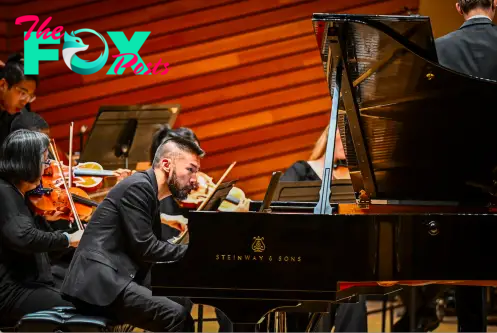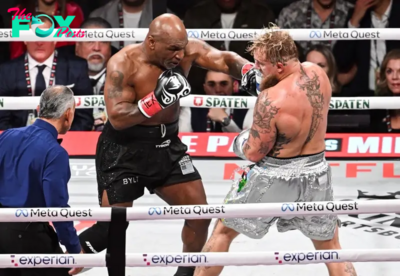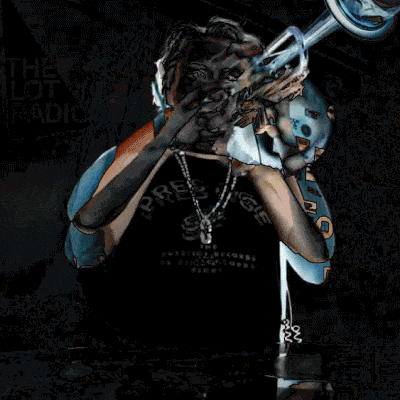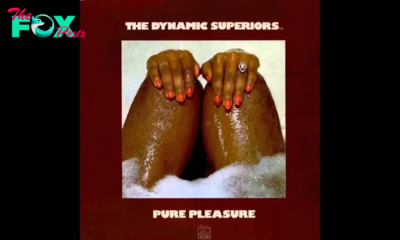Entertainment
Extending the bounds of classical music on the Aspen Competition ŌĆō Seen and Heard Worldwide
 United States Aspen Music Competition 2024 [5]: Harris Live performance Corridor, Aspen, Colorado. (HS)
United States Aspen Music Competition 2024 [5]: Harris Live performance Corridor, Aspen, Colorado. (HS)

The weekday recitals in Harris Corridor this previous week stretched the boundaries of classical music. If George Gershwin famously dabbled in jazz for his Rhapsody in Blue a century in the past, pianist Conrad Tao took it up a couple of notches, together with his new piece impressed by GershwinŌĆÖs. The American Brass Quintet launched music Tuesday that entertained whereas extending the borders of what trumPets, horns and trombones can do.
However nothing may high WednesdayŌĆÖs jaw-dropping creativity in As We Converse, during which Zakir Hussain and Rakesh Chaurasia melded their musical roots in India with B├®la Fleck and Edgar Meyer (from the American South) and made it completely wonderful. Once I heard them play this similar music final fall in San Francisco, I discovered additional depth within the music in contrast with the recording, which gained a Grammy. What we heard in Harris Corridor explored prospects with even better expanse as their disparate types melded extra coherently. An entire new type of music emerged earlier than our ears.
It helps that these 4, whose friendship┬Āgoes again a long time, set the gold normal for his or her devices. Greater than virtuosity, the magic lies in how their particular person voices mixed go straight to a listenerŌĆÖs coronary heart.
Hussain makes his tablas converse, sing, chortle and cry whereas setting down rhythms and including torrents of complicated decorations. The opposite basis is bassist Meyer, an Aspen common who wrote most of the tunes. He can match musical wits with jazz masters like Christian McBride, and with bluegrass giants like Fleck, whose banjo can execute a J.S. Bach fugue flawlessly. Right here it stands in for a sitar because it meshes with HussainŌĆÖs tablas, with out dropping the instrumentŌĆÖs identification as a bluegrass staple.
Chaurasia floats haunting melodies on his bansuri, a wood flute, that extends the groupŌĆÖs sonic palette. His countermelodies and harmonies add a novel taste, whether or not weaving by the music or taking off on virtuosic solos of his personal.
Of the eight picks (from twelve on the album), ŌĆśPashtoŌĆÖ got here collectively greatest. Meyer laid down a drone and Chaurasia floated a winding tune over it. Rhythms and sounds of an earlier fusion ŌĆō Celtic bagpipers and native musicians in Northern India ŌĆō turned completely different aspects to the sunshine, and the piece gained in depth and complexity over its greater than twelve minutes. One other winner was the title tune, during which every musician had an opportunity to specific what their devices can do, which ultimately layered into a brand new sound.
These are all on the 2023 album, a lot of which was written and recorded after a pre-pandemic tour. Some, similar to ŌĆśBeastŌĆÖ and ŌĆśCommerce WindsŌĆÖ return a long time. The encore, ŌĆś1980ŌĆÖ, was written by Meyer in that yr, however took on an Indian tang with this group.

On Monday, Conrad Tao not solely explored the intersection of classical music and jazz however barreled down a couple of aspect streets in Flung Out, his new composition which absorbs a few of at presentŌĆÖs dance music. An advert hoc ensemble of scholars (aside from concertmaster Laura Park Chen) obtained into respectable grooves for each GershwinŌĆÖs and TaoŌĆÖs items.
Rhapsody used the unique association Gershwin wrote and Ferde Grof├® orchestrated for Paul WhitemanŌĆÖs jazz orchestra, debuting in 1924 on a particular ŌĆśExperiment in Fashionable MusicŌĆÖ live performance in New York. Not like the symphonic variations we often hear, it’s significantly extra raucous within the up-tempo components, and the so-familiar large tune feels much less lush. Piotr Wac┼éawik (assistant conductor for the comPetition) drew out jazzier enjoying than WhitemanŌĆÖs unique recording.
Tao wielded spectacular method in GershwinŌĆÖs glittery cadenzas and decorations, although with extra weight and depth than most pianists do, mixing in ear-catching improvisations. The vitality was palpable. The viewers responded with a roar after they all obtained to the acquainted end
If something, Flung Out was a number of levels rowdier. To my ears, one vital distinction was that TaoŌĆÖs rhythmic grooves lasted just a few measures, shorter than GershwinŌĆÖs. One other was an embrace of┬Āspiky dissonances. In his introduction, Tao stated his inspiration was sounds of at presentŌĆÖs New York that he heard from his street-level condo. The twenty-minute tour rattled and banged incessantly earlier than it settled right into a lyrical tune (additionally a nod to Gershwin).
There was loads to chew on ŌĆō the shifting rhythms are particularly intriguing ŌĆō however for me it wanted extra distinction earlier than a welcome, rollicking end. Wind up large, and also you get applause.
For an encore after the Rhapsody, he selected what he described as his transcription of the good jazz pianist Artwork TatumŌĆÖs 1951 solo recording of ŌĆśSomeplace Over the RainbowŌĆÖ. He performed with extra weight however simply as a lot agility, alongside along with his personal interpolations, somewhat like Tatum by the lens of Thelonious Monk.
Of their recital on Tuesday, the American Brass Quintet fielded preparations (by members of the quintet) of music from the early eighteenth century and earlier than, and new works they’ve commissioned, together with a world premiere and two from 2022. The winner was Jennifer HigdonŌĆÖs E-book of Brass, which bracketed two virtuosic and vivacious toccata-like actions round gentler, extra legato fare. The writing took benefit of the quintetŌĆÖs precision of execution and sensitivity to dynamics and tone. Anthony BarfieldŌĆÖs ŌĆśSams─üraŌĆÖ traced a beautiful if bittersweet arc in its eight minutes.
The premiere, A Homicide of Crows, described units of animals in 4 colourful, restlessly fitful actions that included ŌĆśA Tower of GiraffesŌĆÖ and ŌĆśShadow of JaguarsŌĆÖ (that are chased off by a gang of otters).
All of the above outshone a set of nice courtroom dances by William Brade, organized by Raymond Mase (when he performed trumpet within the quintet), and two transient madrigals by Carlo Gesualdo organized by Brandon Ridenour, at present enjoying trumpet.
Harvey Steiman
15.7.2024, Recital by Conrad Tao (piano): Aspen ComPetition Ensemble / Piotr Wacławik (conductor)
Milhaud ŌĆō La cr├®ation du monde, Op.81
Conrad Tao ŌĆō Flung Out (Aspen Music Competition co-commission)
Gershwin/Grof├® ŌĆō Rhapsody in Blue (unique jazz band model)
16.7.2024, Recital by the American Brass Quintet: Kevin Cobb, Brandon Ridenour (trumpets), Eric Reed (horn), Hillary Simms (trombone), John D. Rojak (bass trombone)
Brade/Raymond Mase ŌĆō ŌĆśCourtly Dances and CanzonsŌĆÖ (choice)
Anthony Barfield ŌĆō ŌĆśSams─üraŌĆÖ
David Sampson ŌĆō A Homicide of Crows (world premiere)
Gesualdo/Brandon Ridenour ŌĆō ŌĆśDue sospiraŌĆÖ
Jennifer Higdon ŌĆō E-book of Brass
17.7.2024, As We Converse: B├®la Fleck (banjo), Zakir Hussain (tabla), Edgar Meyer (double bass), Rakesh Chaurasia (bansuri).
Fleck, Hussain, Meyer, Chaurasia ŌĆō ŌĆśBeast within the BackyardŌĆÖ, ŌĆśCommerce Winds BengaliŌĆÖ, ŌĆśMovementŌĆÖ, ŌĆśPashtoŌĆÖ, ŌĆśRickety KarmaŌĆÖ, ŌĆśHidden LakeŌĆÖ, ŌĆśAs We ConverseŌĆÖ, ŌĆśB-tuneŌĆÖ. Encore: ŌĆś1980ŌĆÖ
-

 Entertainment4h ago
Entertainment4h agoJake Paul Beats 58-Year-Old Mike Tyson as the Hits DonŌĆÖt Match the Hype
-

 Entertainment9h ago
Entertainment9h ago3 Steps to Create Earnings That Permits You to Be a Full-Time Artist
-

 Entertainment9h ago
Entertainment9h agoAmerica On CoffeeWeŌĆÖre simply inviting you to take a timeout into the rhythmic ambiance of our breakfast, brunch and/or espresso picks. WeŌĆÖre completely happy everytime you cease by.Disgrace (instrumental) Evelyn Champagne King
-

 Entertainment14h ago
Entertainment14h agoJasmine to Cinderella: Popular Disney Princesses that Are No Damsels in Distress
-

 Entertainment19h ago
Entertainment19h agoAmerica On CoffeeWeŌĆÖre simply inviting you to take a timeout into the rhythmic ambiance of our breakfast, brunch and/or espresso alternatives. WeŌĆÖre comfortable everytime you cease by.JAPANESE CHOCOLATE SWISS ROLL
-

 Entertainment20h ago
Entertainment20h agoTV Funnyman Conan OŌĆÖBrien to Host the 2025 Oscars
-

 Entertainment1d ago
Entertainment1d agoKNOW WHAT YOUR DOG IS SAYING
-
![New PlatoŌĆÖs Closet Store Opens In Hudson Valley [Photos]](https://cdn.thefoxposts.com/vimedia/w400/2024/11/18/3173d870ee3eb4cb9f7d89588224f447.jpg)
![New PlatoŌĆÖs Closet Store Opens In Hudson Valley [Photos]](https://cdn.thefoxposts.com/vimedia/h80/2024/11/18/3173d870ee3eb4cb9f7d89588224f447.jpg) Entertainment1d ago
Entertainment1d agoNew PlatoŌĆÖs Closet Store Opens In Hudson Valley [Photos]

















